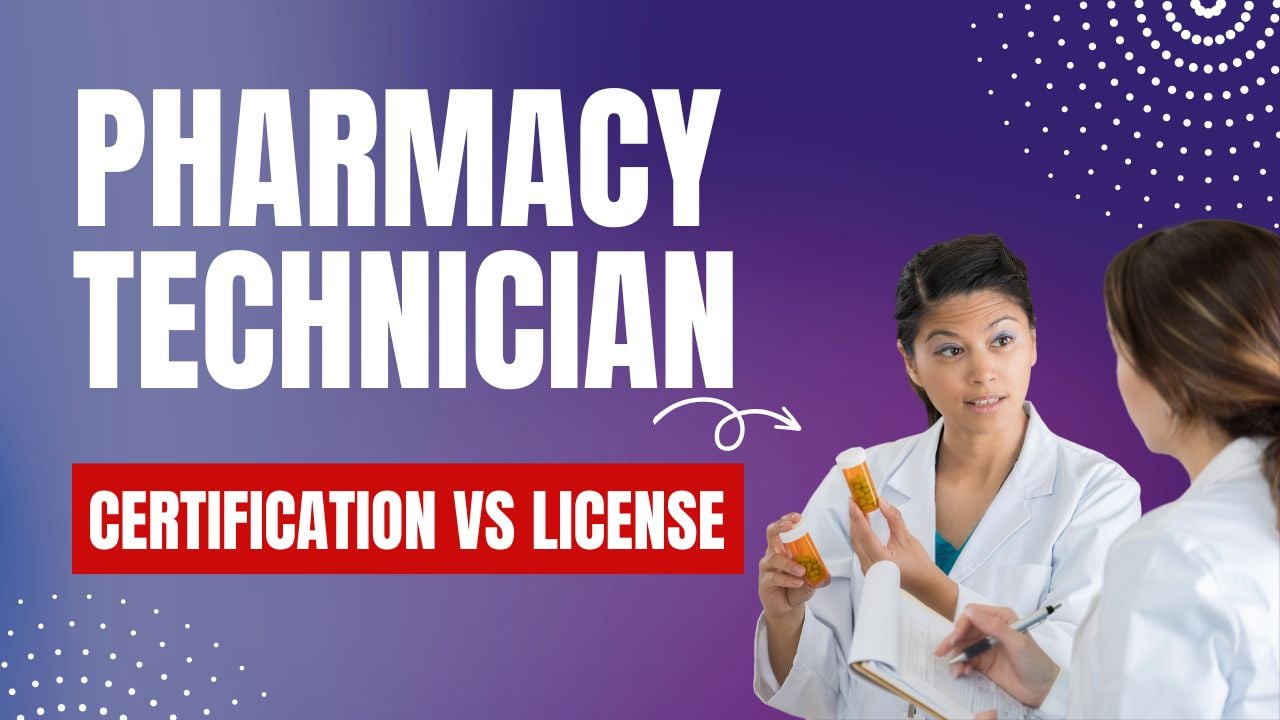How to Get My Certification or License as a Pharmacy Technician

Congrats on finishing your pharmacy technician (PhT) training! Now, let's level up your career. Getting certified opens doors to exciting opportunities. Here's a step-by-step guide to getting your credentials and kickstarting your journey. Let's dive in!
Steps on how to apply for a PhT license:
Should your state require it, here are the essential steps to getting your license.
Step 1: Research
Each state has its own governing body that handles licensing requirements. In certain states, this responsibility falls under the Board of Pharmacy, while in others, it falls under departments such as the Department of Consumer Protection or Division of Consumer Affairs. The specific department may vary, but its role is to oversee the licensing process.
To assist you in familiarizing yourself with the regulatory agency for your state and its requirements, the National Association of Boards of Pharmacy offers an interactive map. This map not only helps you locate the agency but also provides a direct link to their website and contact information.
Step 2: Complete required training, exams, or work experience
It is essential to complete the required training, exams, or work experience to work as a PhT, which varies per state. This step ensures that you possess the necessary knowledge, skills, and practical experience in the field. If you already have the training, certifications, or experience, make sure to double-check if these match your state’s requirements.
Step 3: Prepare the required documents
Gather the necessary documents, such as identification, transcripts, proof of training, and any relevant work experience. Ensure these documents are up-to-date and meet the state's specifications.
Step 4: Submit your application
Fill out the application form your state's pharmacy board provided wholly and accurately. Double-check that you have included all required documents and fees.
Step 5: Background check
Depending on the state, you may need to undergo a criminal background check. Follow the instructions provided by the board for this process.
Step 6: Exam and assessment
Some states require passing a pharmacy technician exam. Prepare for the exam by reviewing the relevant study materials and taking practice tests. Additionally, you may need to complete an assessment of your knowledge and skills.
Step 7: Pay application fees
Pay the required application fees, which vary by state. Ensure you submit the payment in the accepted form, such as a check or money order.
Step 8: Follow up
After submitting your application, stay in touch with the pharmacy board to inquire about the status of your application. Address any additional requirements or requests promptly.
Step 9: Receive Your License
Once the state board approves your application, they will mail your pharmacy technician license to you. Make sure to review the license for accuracy and keep it in a safe place.
Final Thoughts:
Obtaining your pharmacy technician credentials opens up a world of possibilities. The healthcare industry is in constant need of skilled professionals like you, so embrace this new chapter of your career with confidence! You can learn more about the exciting opportunities that await you in our blog post about the pharmacy technician job outlook. Best of luck on this exciting journey!

Pia Yapjoco is part of the school growth and sales team at Dreambound. She helps facilitate school partnerships that expand educational opportunities for aspiring students in allied health and other trades. Beyond work, she curates her pup's Instagram, hunts for hidden coffee gems, and escapes into cozy gaming.




